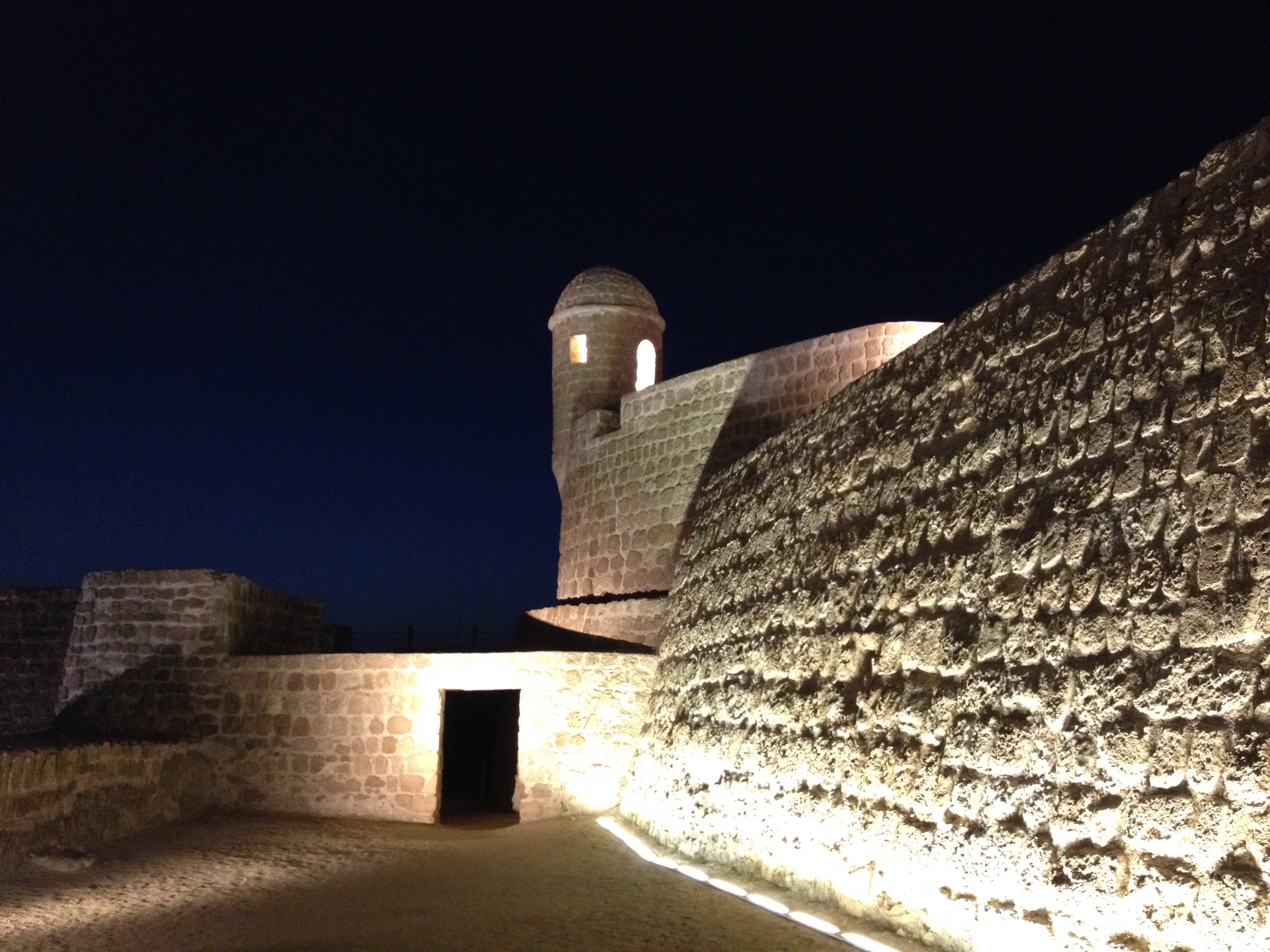Dispatch: Bahrain Old And New

Dispatch columnist Holly Bennett reflects on her time in Bahrain, which she visited to cover the highly-anticipated Challenge Bahrain triathlon.
I’ve been home from Challenge Bahrain and the Middle East for nearly two weeks now, but–as often happens when I travel–images and memories of my time there make ongoing appearances in my dreams. Bahrain was vastly different than anywhere I’d yet traveled and, as I did not race but rather focused on the astounding pro field assembled for the inaugural race, I had more opportunity than most to explore some of the area–an area that’s an unknown to many westerners and that many of my friends, followers and readers have expressed curiosity about. With a few afternoons and evenings of wandering under my belt I can attest to the fact that there’s plenty to see and do (when not busy swimming, cycling and running) in this tiny yet passionate desert nation.
Bahrain is a fascinating mix of old and new, with soaring skyscrapers, the slick F1 motorsport track and the lavish Sofitel resort juxtaposed against the ancient Dilmun Burial Mounds (dating between 3000 BC and 600 AD), the Qal’at al Bahrain (the Bahrain Fort, a UNESCO World Heritage site) and the Tree of Life (a 400-year-old tree flourishing in the desert despite no known water source). In the capital city of Manama one can shop at some of the world’s most illustrious malls or meander through the old-style market in the Souq. On the city streets, an equal blend of men in western business suits and men in traditional thobes and ghutras dot the sidewalks. At dawn and at dusk, the otherwise monochromatic desert-scape takes on a magical glow. These are the images that continue to fill my mind and make me eager to share more of what I experienced as I toured some of Bahrain’s cultural highlights.
No visit to Manama is complete without a stop at the Al Fateh Grand Mosque. I was surprised to learn that the mosque is relatively new (its construction was complete in 1988) and that the massive building can accommodate 7,000 worshipers at once. It’s one of a handful of mosques in Bahrain that allow non-Muslim visitors, and people of all denominations are welcome to join in the four-time daily prayers (informative guided tours, a must for any visitor and available in multiple languages, are halted while prayers are in progress). Female visitors to Al Fateh are required to don traditional abaya robes and headscarves (provided at reception), and although the main prayer floor is reserved for men, women have use of the expansive balcony and also a separate women’s prayer room (complete with modern streaming video of the service, of course). The mosque’s celebrated architectural elements are a nod to the concept of international and interdenominational inclusiveness, hailing from all corners of the globe. These include a giant Austrian crystal chandelier, handblown glass light fixtures from France, Iranian stained glass windows, Italian marble lining the vast courtyard and stairs, carpeting from Scotland and Indian teak wood doors and banisters–a truly elaborate mish-mash of inspired design.
RELATED PHOTOS: 2014 Challenge Bahrain
In search of a more historic site, I paid a visit to Qal’at al Bahrain (the Bahrain Fort), perfectly timed with sunset and the subsequent moonrise. The long walk leading up to the fort was mesmerizing, with the dramatic stone walls rising up in front of me, the Fort Museum on the bank of the Gulf of Bahrain sitting to one side and the buzzing streets of the capital city in the distance on the other. Standing under an ancient turret at the fort and looking back to see the moon sparkling above Manama’s uber-modern skyline highlighted the union of age-old and contemporary elements that is commonplace in Bahrain. Similarly, the arched doorways and secret passages throughout the fort beckon for exploration, with several leading to avant-garde visual and audial art installations within the fort’s aged rooms.
At the base of the fort was one of two artisans markets I attended in Bahrain. This one, hosted by the Ministry of Culture, was tiny, with just five booths–a potter, a weaver, a spice seller and two vendors of homemade snacks–plus a keyboardist playing local music. Still, it drew a decent crowd, with locals and tourists alike wandering between the market, the museum and the fort and stopping to socialize between each venue. From the fort market I hailed a taxi and headed to the trendy Adliya neighborhood, Bahrain’s hub of upscale restaurants and contemporary creative art. The main attraction that evening in Adliya was an annual market known as Market 338/The Nest hosted in and around the Al Riwaq Art Space (a gallery, café and series of eco-themed outdoor art installations). Market 338 was similar to an artisan’s market one might find in Boulder or San Diego or any number of U.S. locales, with vendors lining the streets offering organic juices, freshly baked sweet and savory treats, unique housewares, handcrafted clothing and funky jewelry. A DJ spun tunes in a central courtyard, children climbed on playground structures and adults kicked back and enjoyed the refreshing December evening air–with men and women both dressed in a visually interesting mix of western and traditional wear.
I hardly had time for everything I wanted to do in Bahrain–visits to the National Museum, the Barbar Temple, several historic homes and an array of Middle Eastern restaurants will have to wait until next year. But I certainly enjoyed a number of experiences that gave me a positive impression of Bahrain as a place with an array of cultural offerings, both ancient and au courant.